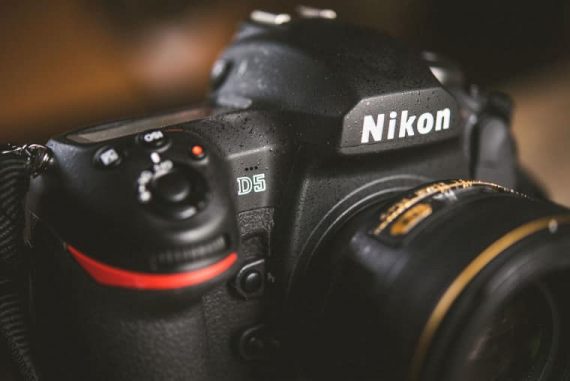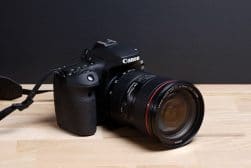
Nikon D700 DSLR Camera Review
After owning a Nikon D700 DSLR camera for over 3 years, here is my review. It may be old but the Nikon D700 is still one of the best full frame DSLRs that you can buy. Snap one up while you can still get your hands on one!
By Mark Condon
The Nikon D700 has been somewhat forgotten about in recent years. New cameras keep appearing, pushing this legendary camera further and further back in the minds of Nikon users.
In today’s consumerist society, it seems that owning the latest gadget is a necessity. For some products, an annual release with accompanying fanfare means an essential upgrade for many consumers, whether they actually need the new features or not.
The iPhone is a great example of this, where biannual upgrades announced to the world by Apple’s powerful and sexy marketing machine elicit Apple fans to scrabble blindly to get their hands on the latest product. Whether they need it or not is irrelevant, Apple creates the desire to own the very latest gadget, and with each new release, the previous iPhone is immediately devalued.
Then of course there’s the software upgrades that seem designed to cripple older hardware, forcing the consumer to upgrade.
Thankfully, professional DSLRs are only upgraded every few years. This gives the consumer the time to actually use the camera to its full potential, so that by the time the manufacturer actually releases a new model, an upgrade can be somewhat justifiable. In addition, the upgrades usually comprise a significant leap in technology to warrant their new, elevated price.
One of Nikon’s Best Cameras Ever – The Nikon D700
The 12.1 megapixel full frame Nikon D700 was released in July 2008. That’s over 5 years ago – a very long time in the world of technology. When it was released, it was hailed as the first ‘compact’ full frame camera, essentially a Nikon D3, (Nikon’s top of the line DSLR at the time), shrunk down and squeezed into a body the size of the entry level Nikon D300.
The D700 is smaller and lighter than the Nikon D3 which is over twice its price, but still affords the same incredible image quality.
I won’t go into detail about the Nikon D700’s specifications nor functions, since there is a lot of information on the web about it already. Camera review site dpreview.com awarded the camera a Highly Recommended 95%, and if it wasn’t for the release of the Canon 5d Mark II around the same time, with its industry changing video capabilities at a similar price, surely more professional photographers would still be using a Nikon D700 today.
So if this camera is over 5 years old, why the hell am I reviewing it?! Since the release of the Nikon D700, in the Nikon full frame line up there’s been the Nikon D600, the Nikon D800, the Nikon D4, the Nikon D610 and the Nikon DF, all of which are ‘better’ than the Nikon D700.
I say ‘better’ since this term is completely subjective, hence my reason for this review. Sure, on paper, all the aforementioned cameras offer superior features to the Nikon D700, and no doubt even superior image quality. After all, 4 years between product releases is a long time, so one would expect some seriously advancements in this arena.

I have owned a Nikon D700 for 3 years. I decided to embrace the Nikon system over Canon merely due to camera aesthetics, in that the equivalent Canon at the time (the Canon 5d Mark II) didn’t fit my hand well and I didn’t like the button placement. Since then I have shot thousands of photos professionally so I think I have a good idea of the Nikon D700’s strengths and weaknesses.
Recently I went to a Nikon event in the Hunter Valley. It was a camera enthusiast’s wet dream, with the entire new Nikon lineup available to sample. I’d read all the reviews of the new lineup and was eager to put them to the test, so grabbed a Nikon D600 and a Nikon D800, along with a Nikon 50mm f/1.4 and some other of the best Nikon lenses for portraits.
After getting used to the button layout, I have to say that aesthetically, the hardware on both the cameras is quite similar to my Nikon D700, which is a pleasure to hold and built like a tank. The Nikon D600 is of course lighter, but it has less features than the Nikon D700 so this is inevitable. If the Nikon D600 had better (wider) AF Point placement, I think it’d be an ideal upgrade to the Nikon D700.

The images when viewed on my computer showed where the main advancements in technology had come. Straight out of camera, the RAW files on both cameras were more contrasty and vivid than my D700’s, closer in fact to how a jpeg would look. The Nikon D800 with its 36.3 megapixels and incredible dynamic range brings medium format quality to a DSLR body, and zooming in on files to inspect details is mind blowing.
When I shoot weddings I hire a Nikon D4. I figure, I want to provide my clients with photos from the best DSLR camera available, and in the Nikon lineup this is the Nikon D4. When Nikon releases the D5, I will hire this, and so on. It is more a psychological thing than anything else to tell the truth – I know I’m using the best which gives me the confidence that every image will look as good as it can do, and anyone at the wedding who knows about cameras will ‘respect’ me more – sad but true. It seems these days everyone owns a DSLR, so as the paid photographer, you better make sure yours is bigger than Uncle Bob’s! ;-)
Having said this, I could justifiably shoot with two Nikon D700 bodies, which I have done in the past. The Nikon D4 is far superior in low light, and its RAW files more vivid and clear, but here’s where the justification of upgrading from my excellent Nikon D700 becomes a little weak.

You see, pixel peeking and taking photos of brick walls aside, the majority of professional photographers at least in the wedding industry, post process their images. This typically involves a Lightroom preset, or a Photoshop curve or two, taking the RAW file from good to amazing. Indeed, post processing is unfortunately one of the main tools in today’s photographer’s arsenal to elevate his status above his peers.
Therefore, the fact that the RAW files from the new Nikons are so much better than those from my Nikon D700 is largely irrelevant to me. After applying my adjustments in post, only an expert at Nikon could tell the files apart, and even he would have a hard time without peeking at the EXIF data. In addition, I’ll never need the memory card munching 80mb RAW files from the D800, a camera which is (for the time being at least), reserved solely for studio work and landscape photography.
I even know Nikon D700 users (professionals) who preordered a Nikon D800 thinking it was next inevitable step for them, used it for a few months then sold it to return to their D700! The unfortunate ones had already sold their D700, which meant desperately trying to find a used one on ebay – it’s actually quite hard to do, and probably a good indication of the popularity of this camera even today.
Canon is another story completely. From the Canon 5d Mark II to the Canon 5d Mark III, you may as get the wallet out straight away since the Mark III is far superior to its predecessor and for the professional photographer, the upgrade is a no-brainer.
However, I’m sticking with my Nikon D700 for now. Sure, every time I read a review of one of the new Nikons I do get the inevitable pangs of desire (since we all as photographers relish new gear!), but then I realise I simply do not need a new camera yet. The advances in technology simply haven’t been great enough yet.
The Nikon D700 was excellent when it was released 5 years ago, and it is still excellent today.
My advice would be to ignore all the marketing hyperbole and suppress your desires to upgrade to the latest and greatest thing, and carry on shooting with your Nikon D700 as it is still one of the best pro dslrs in the world. If you’re lucky, you’ll still be able to buy one for an absolutely bargain price by clicking here.














